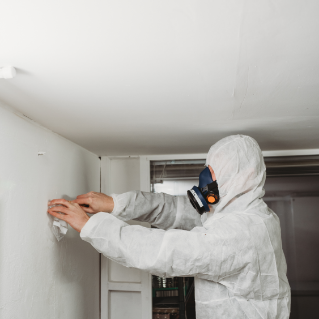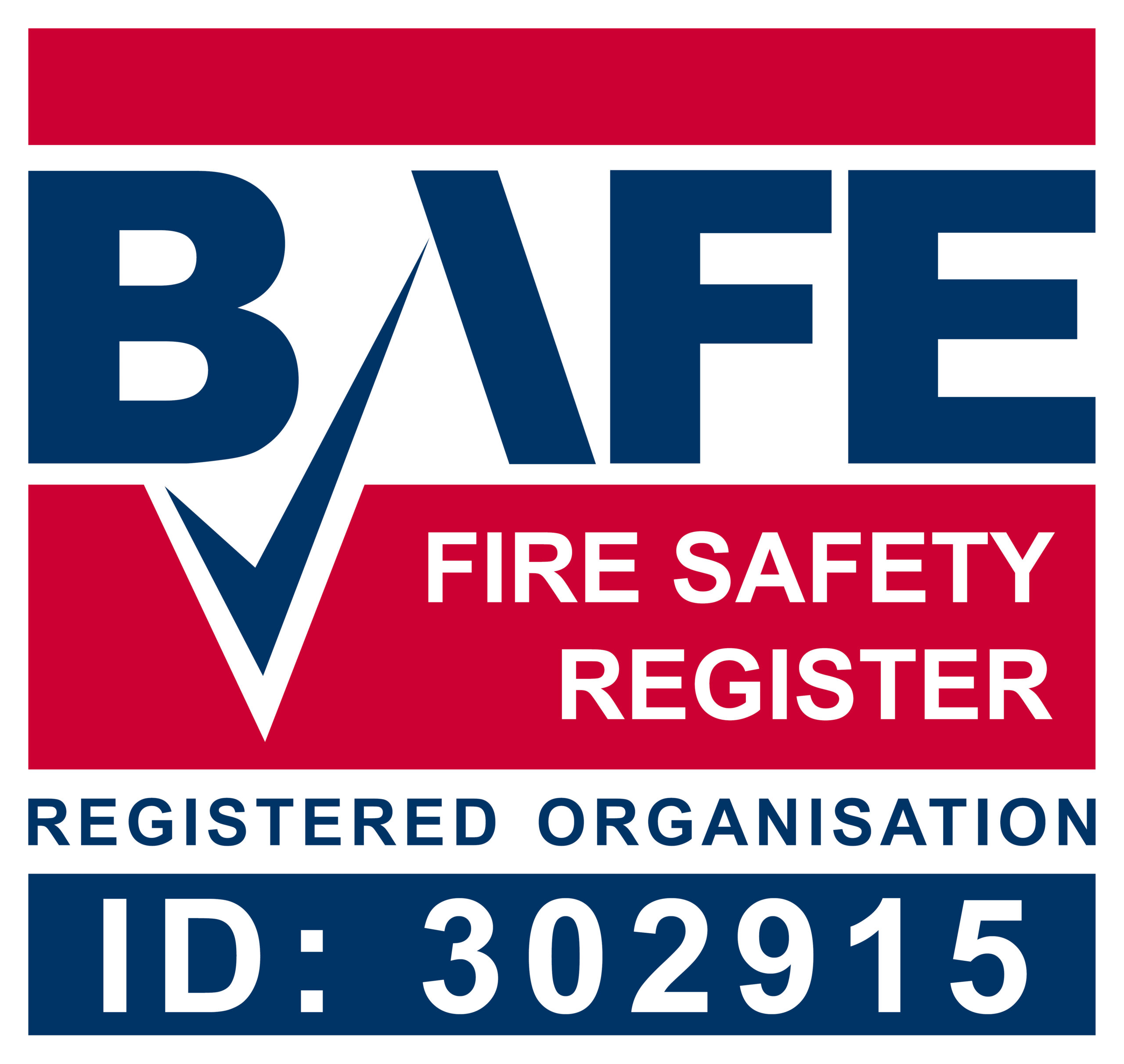
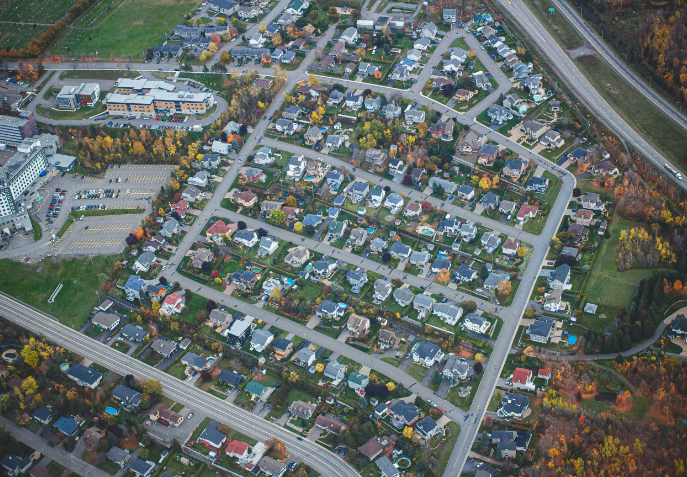


Different Types of Survey
As set out by the HSG264 there are only two surveys to be considered, a Management Survey and Refurbishment & Demolition Survey although you can have a mixture of the two. Here at Salvum we have separated the types out further so the titles are specific to the type of property or aim of the survey. The different types are above, click on the link for a description of each…
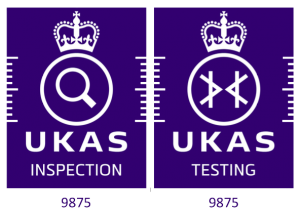
What is it?
The accreditation process determines the technical competence and integrity of organisations providing inspection, testing, calibration and certification services.
UKAS is the sole national accreditation body, recognised by Government, to assess these types of organisations against international standards. It provides an independent and authoritative declaration that the organisation carrying out the survey has the people, facilities, technical expertise, management systems and track record to undertake the activity professionally and competently.
Salvum are UKAS Accredited for Asbestos Surveying ISO17020 & Asbestos Analysis IS017025.
“HSE strongly recommends the use of an accredited surveyor.”

Management Survey
A management survey is the standard survey. Its purpose is to locate, as far as reasonably practicable, the presence and extent of any suspect ACMs in the building which could be damaged or disturbed during normal occupancy, including foreseeable maintenance and installation, and to assess their condition. Management surveys will often involve minor intrusive work and some disturbance. The extent of intrusion will vary between premises and depend on what is reasonably practicable for individual properties, ie it will depend on factors such as the type of building, the nature of construction, accessibility etc.
A management survey should include an assessment of the condition of the various ACMs and their ability to release fibres into the air if they are disturbed in some way. This ‘material assessment’ will give a good initial guide to the priority for managing ACMs as it will identify the materials which will most readily release airborne fibres if they are disturbed. The survey will usually involve sampling and analysis to confirm the presence or absence of ACMs.
However a management survey can also involve presuming the presence or absence of asbestos. A management survey can be completed using a combination of sampling ACMs and presuming ACMs or, indeed, just presuming. Any materials presumed to contain asbestos must also have their condition assessed (i.e. a material assessment). Management surveys can involve a combination of sampling to confirm asbestos is present or presuming asbestos to be present.

Asbestos Refurbishment & Demolition Survey
A refurbishment and demolition survey is needed before any refurbishment or demolition work is carried out. This type of survey is used to locate and describe, as far as reasonably practicable, all ACMs in the area where the refurbishment work will take place or in the whole building if demolition is planned. The survey will be fully intrusive and involve destructive inspection, as necessary, to gain access to all areas, including those that may be difficult to reach.
A refurbishment and demolition survey may also be required in other circumstances, eg when more intrusive maintenance and repair work will be carried out or for plant removal or dismantling. There is a specific requirement in CAR 2012 (regulation 7) for all ACMs to be removed as far as reasonably practicable before major refurbishment or final demolition.
Removing ACMs is also appropriate in other smaller refurbishment situations which involve structural or layout changes to buildings (eg removal of partitions, walls, units etc). Under CDM, the survey information should be used to help in the tendering process for removal of ACMs from the building before work starts. The survey report should be supplied by the client to designers and contractors who may be bidding for the work, so that the asbestos risks can be addressed. In this type of survey, where the asbestos is identified so that it can be removed (rather than to ‘manage’ it), the survey does not normally assess the condition of the asbestos, other than to indicate areas of damage or where additional asbestos debris may be present.
However, where the asbestos removal may not take place for some time, the ACMs’ condition will need to be assessed and the materials managed. Refurbishment and demolition surveys are intended to locate all the asbestos in the building (or the relevant part), as far as reasonably practicable. It is a disruptive and fully intrusive survey which may need to penetrate all parts of the building structure. Aggressive inspection techniques will be needed to lift carpets and tiles, break through walls, ceilings, cladding and partitions, and open up floors. In these situations, controls should be put in place to prevent the spread of debris, which may include asbestos. Refurbishment and demolition surveys should only be conducted in unoccupied areas to minimise risks to the public or employees on the premises. Ideally, the building should not be in service and all furnishings removed.
For minor refurbishment, this would only apply to the room involved or even part of the room where the work is small and the room large. In these situations, there should effective isolation of the survey area (eg full floor to ceiling partition), and furnishings should be removed as far as possible or protected using sheeting. The ‘surveyed’ area must be shown to be fit for reoccupation before people move back in. This will require a thorough visual inspection and, if appropriate (eg where there has been significant destruction), reassurance air sampling with disturbance. Under no circumstances should staff remain in rooms or areas of buildings when intrusive sampling is performed.

Asbestos Pre-Purchase Survey
This type of survey is for exactly as the title indicates, for anyone purchasing a property. It became quite clear to us early on that this was a much needed type of survey for homebuyers. With more and more Chartered Surveyors highlighting potential asbestos containing materials within their reports it was key that we produced a report that covers these areas and looks for further materials.
This survey is a non-intrusive survey therefore no damage is caused to the property. The main reason for this is that the vendor of the property is unlikely to allow us to undertake a fully intrusive survey (Asbestos Refurbishment & Demolition Survey) at this point when you, the buyer do not own the property. Unfortunately due to this being a non intrusive survey there is the possibility of asbestos containing materials still being present within the fabric of the building.
However if we have not got to them during this survey then it will not compromise your safety as they are not being disturbed. This type of survey cannot be used should refurbishment or demolition works are to be undertaken.

Asbestos Sampling Survey
This type of survey is used when the client specifically knows where the sample or samples need to be taken; this is not a full survey. This type of survey is limited to the specific areas given by the client.The samples are gathered and sent to our UKAS Accredited Laboratory ISO17025 for analysing, once these have been received and analysed the results and certificate are sent to the client telling them whether it does or does not contain asbestos and what type of asbestos containing material it is.
This type of survey is often used when a RICS Surveyor has highlighted areas/materials that could contain asbestos within their homebuyers report. Trades people also use this type of survey when they are specifically working in a particular area of a building and they come across a material that could contain asbestos.
There are many other reasons why this type of survey could be adopted but we would advice you speak to one of our friendly team and they will be happy to advice you on what type of asbestos survey is the best for you.From our site survey the results are available within 24 hours preventing a hold up on purchasing a house or stopping work onsite.

As a UKAS Accredited Laboratory we fully authorised to undertake Bulk Sample analysis.
Sampling and analysis of materials for the presence of asbestos is normally undertaken to comply with Control of Asbestos Regulations. This may be as part of the duty to manage asbestos under regulation 4, or to comply with regulation 5. Regulation 5 requires employers of the people who are going to work with asbestos to identify the asbestos type(s) by analysis or to assume the material contains the most hazardous type(s) of asbestos (ie crocidolite and/or amosite). The purpose of the sampling is to collect representative samples of the suspect materials. The purpose of the analysis is to determine whether asbestos is present, and, if so, the type(s).

Residential Asbestos Survey
This Asbestos Management Survey is for owner occupiers/tenants that live in the property but want peace of mind to know what asbestos containing materials are presents within the property. This survey is for general day to day occupation of the property. The survey is a non-intrusive survey and no damage is caused to the property. The survey will not cover the whole of the property e.g under floor boards, within partition walls etc but it will give you a good understanding of what materials are present within the property.
This type of survey cannot be used should refurbishment or demolition is to take place in the future.


You are mostly at risk when:
-You are working on an unfamiliar site
-The building you are working on was built before the year 2000
-Asbestos-containing materials were not identified before the job was started
-Asbestos-containing materials were identified but this information was not passed on by the people in charge to the people doing the work
-You don’t know how to recognise and work safely with asbestos
-You know how to work safely with asbestos but you choose to put yourself at risk by not following proper precautions, perhaps to save time or because no one else is following proper procedures
Remember, as long as the asbestos is not damaged or located somewhere where it can be easily damaged it won’t be a risk to you.
You can’t see or smell asbestos fibres in the air.
The effects of being exposed to asbestos take many years to show up – avoid breathing it in now.
Smoking increases the risk many times.
Asbestos is only a danger when fibres are made airborne and breathed in.
This list is not exhaustive and for illustration purposes only
AIB = Asbestos Insulating Board
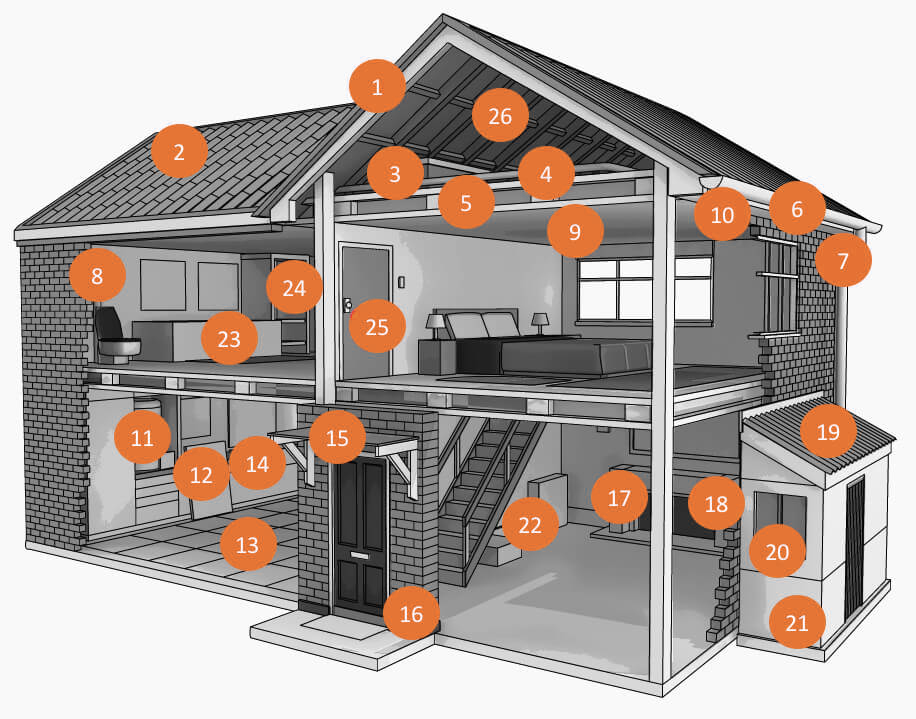
This list is not exhaustive and for illustration purposes only
AIB = Asbestos Insulating Board
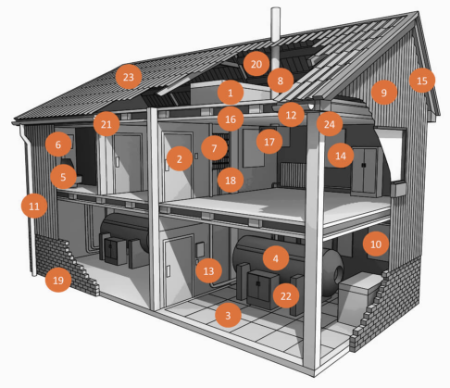
This is an Asbestos Sampling Survey. This is for one sample and we will visit site to take the sample and have this analysed by the UKAS Accredited Laboratory. The results of which will be ready to be distributed within 2-3 working days from the site visit.
Further samples can be taken at an additional cost, please call us to get a quotation.
Please refer to the description above for more in depth information.
The simple answer is yes but only if it is disturbed. If left alone and managed it is a perfectly safe material.
The general duties in Section 3(1) of the Health and Safety at Work etc Act 1974 (HSW Act) apply to protect householders from any risks from work activities being carried out in their homes. Where work being done involves asbestos-containing materials then the Control of Asbestos Regulations 2012 will also apply, in particular: regulation 11 (Prevention or reduction of exposure to asbestos) regulation 15 (Arrangements to deal with accidents, incidents and emergencies) regulation 16 (Duty to prevent or reduce the spread of asbestos In owner-occupied domestic properties, the owners are not legally responsible for risks to contractors from asbestos, as the owners themselves are not engaged in any work activity.
The simple answer is YES. Asbestos may be part of any commercial or domestic building which was built or refurbished before the year 2000.
We can normally be onsite and surveying the property within a few days. We also try to get the survey done as quickly and as professionally as possible to prevent delay for our clients.
The presence of asbestos alone should not be a cause for concern. Asbestos only becomes a risk to human health when it is released into the air and breathed in. Duty holders – those who are responsible for maintaining or repairing non-domestic premises – are required to actively manage any asbestos in buildings. This provides a practical way to identify, prioritise and properly plan the actions that need to be taken to manage the risks. Where asbestos containing materials are assessed as being in good condition and not in a position where they are likely to be damaged they should be left in place and monitored. However, where asbestos is in poor condition or is likely to be damaged during the normal use of the building, it should be sealed, enclosed or removed, as appropriate. Those considered most at risk of exposure to asbestos fibres are tradesmen and maintenance workers who disturb the fabric of buildings during the course of their work. Precautions must be taken to ensure that tradespeople don’t put themselves or others at risk by disturbing asbestos.
We turn our reports around within 2-3 working days from the site survey. If not sooner but we do not like to make promises we cannot keep. The laboratory we use are the fastest in the country thus making us the quickest.
We do not undertake asbestos removal due to this being frowned upon by the HSE (Health & Safety Executive). It is a conflict of interest for an asbestos surveying company to undertake asbestos removal. This practice has lead to surveyors falsifying results and misadvising clients in order to gain asbestos removal works and making more money.
However, we do have two pre-checked and suitably licensed and qualified asbestos removal contractors that are happy to quote for removal works from our survey reports free of charge.
No, as long as the asbestos containing material is in a good condition then it is a perfectly safe material. As surveyors removal is always the last resort.
There are NO UPFRONT FEES. Payment is required prior to release of the report. We undertake all work prior to payment in good faith and payment is required when the reports are ready to be sent to you.
We accept payment by Debit Card, Credit Card, Bank Transfer (online banking) or Cheque. Whichever is easiest.




